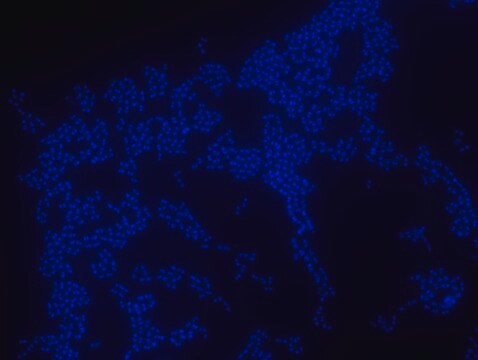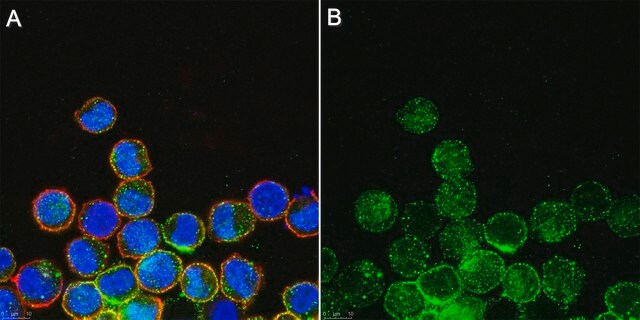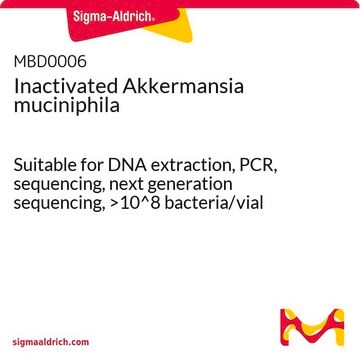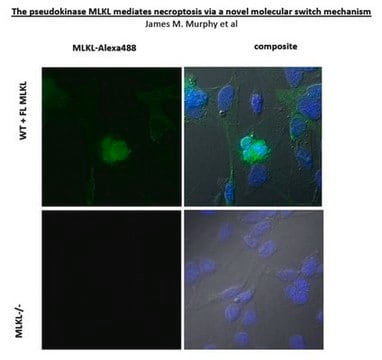MBD0050
Akkermansia muciniphila FISH probe-ATTO488
Probe for fluorescence in situ hybridization (FISH), 20µM in water
Scegli un formato
1.040,00 €
Scegli un formato
About This Item
1.040,00 €
Prodotti consigliati
Livello qualitativo
tecniche
FISH: suitable
Fluorescenza
λex 504 nm; λem 521 nm
Condizioni di spedizione
dry ice
Temperatura di conservazione
−20°C
Descrizione generale
Caratteristiche e vantaggi
- Visualize, identify, and isolate Akkermansia muciniphila cells.
- Observe native A. muciniphila cell populations in diverse microbiome environments.
- Specific, sensitive, and robust identification of A. muciniphila in bacterial mixed population.
- Specific, sensitive, and robust identification even when A. muciniphila is in low abundance in the sample.
- FISH can complete PCR based detection methods by avoiding contaminant bacteria detection.
- Provides information on A. muciniphila morphology.
- Identify A. muciniphila in clinical samples such as, gut lumen content, appendix samples (formalin-fixed paraffin-embedded (FFPE) samples), fecal samples and colon tissue.
- The ability to detect A. muciniphila in its natural habitat is an essential tool for studying host-microbiome interaction.
Codice della classe di stoccaggio
12 - Non Combustible Liquids
Classe di pericolosità dell'acqua (WGK)
WGK 1
Punto d’infiammabilità (°F)
Not applicable
Punto d’infiammabilità (°C)
Not applicable
Scegli una delle versioni più recenti:
Certificati d'analisi (COA)
Non trovi la versione di tuo interesse?
Se hai bisogno di una versione specifica, puoi cercare il certificato tramite il numero di lotto.
Possiedi già questo prodotto?
I documenti relativi ai prodotti acquistati recentemente sono disponibili nell’Archivio dei documenti.
Filtri attivi
Il team dei nostri ricercatori vanta grande esperienza in tutte le aree della ricerca quali Life Science, scienza dei materiali, sintesi chimica, cromatografia, discipline analitiche, ecc..
Contatta l'Assistenza Tecnica.








